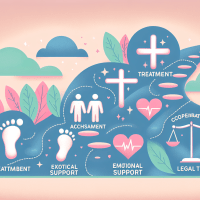Filing Mesothelioma Asbestos Claims: A Compassionate Guide
Hello, I’m Jane Smith, R.N., with 15 years of oncology experience, and I understand the emotional and practical challenges that come with a mesothelioma diagnosis. When I first encountered the complex journey of filing mesothelioma asbestos claims, I felt overwhelmed yet determined to help others navigate this daunting process. This guide is crafted from both professional insight and personal experience, offering a compassionate roadmap for patients, families, and caregivers.

Understanding Mesothelioma and the Claims Process
Mesothelioma is a rare, aggressive cancer primarily caused by asbestos exposure. When the diagnosis lands unexpectedly, one of the first questions many face is, “How do I file a mesothelioma asbestos claim?” In my experience, it is essential to understand both the medical and legal facets of this condition. Filing claims is not just about seeking financial redress—it is also about acknowledging the journey and ensuring compensation for the extensive hardships encountered over time.
Figure 1: Connecting with others who truly understand can provide immeasurable strength and support.
What Are Mesothelioma Asbestos Claims?
I know that the terminology can be confusing. In simple terms, mesothelioma asbestos claims refer to legal actions taken by individuals exposed to asbestos, seeking compensation for the damage and suffering caused. These claims may involve asbestos trust funds, wrongful death lawsuits, or personal injury claims. It is a deeply personal process that intertwines medical facts with legal rights, and every claim is as unique as the journey behind it.
The Role of Legal and Medical Support
From my experience, understanding your rights is crucial. Many patients do not realize that legal aid through mesothelioma law firms and legal support organizations can play a secondary, yet important, role in supporting your overall journey. I always remind those I guide that true strength lies in combining empathetic medical care with clear, transparent legal support. For instance, MesoGuideCenter is a free resource supported by our network of mesothelioma law firms. We connect patients with experienced legal and medical professionals. This funding allows us to provide comprehensive information and support at no cost to you.
Understanding Diagnosis and Staging
After a mesothelioma diagnosis, it’s critical to fully comprehend your condition. Typically, doctors use various biopsies—such as thoracoscopy or thoracentesis—to confirm mesothelioma. The staging system, usually ranging from Stage 1 to Stage 4, guides treatment decisions. For example, Stage 1 may offer more treatment options and a better prognosis, while later stages necessitate a multi-modal approach involving surgery, chemotherapy, or immunotherapy (like Nivolumab/Ipilimumab). I encourage you to discuss these options openly with your specialist, as understanding your pathology report can empower you to make informed decisions.
Navigating Treatment Options Together
Treatment for mesothelioma is multifaceted. I have seen how a clear understanding of your options can alleviate some of the immense emotional burden. Common treatment strategies include:
- Surgery: Often employed in early stages to remove cancerous tissues.
- Chemotherapy: Helps target rapidly dividing cancer cells, often in combination with other modalities.
- Immunotherapy: Uses drugs like Nivolumab/Ipilimumab to harness the body’s immune system.
- Multimodal Therapy: Combines treatments to improve overall outcomes.
To learn more about treatment options, I suggest checking out our internal article Mesothelioma Treatment Options Explored which dives deeper into each approach.
Coping With the Emotional Waves
Being diagnosed with mesothelioma often triggers a cascade of strong emotions: fear, grief, and isolation among them. I have personally felt these waves of emotion. When I first heard the word mesothelioma, I felt the ground shift beneath my feet. I discovered that open communication with loved ones, joining support groups, and even simple mindfulness exercises can make a significant difference.
It might help to ask yourself: “What small step can I take today to feel just a little better, even if it’s simply talking it out with someone who understands?” This reflective question has served as a gentle reminder to always look for hope during dark times.
Figure 2: A clear visual breakdown of treatment pathways can demystify complex processes and empower decision-making.
Your Step-by-Step Guide to Filing Mesothelioma Asbestos Claims
Embarking on the journey to file a mesothelioma asbestos claim might seem overwhelming, but breaking it down into manageable steps can help. Here’s a step-by-step guide based on my experience and extensive research:
Step 1: Confirm Your Diagnosis and Eligibility
The first step is ensuring a proper mesothelioma diagnosis. Confirm your diagnosis with at least one additional opinion, if possible. Your medical records, biopsy results, and pathology reports will serve as foundational documents for any claims.
Step 2: Gather All Relevant Medical and Exposure Records
Document your history of asbestos exposure along with detailed medical records. This includes treatment histories, diagnostic test results, and any documentation that can link your condition to asbestos exposure. A well-organized file can truly make a difference when initiating a claim.
Step 3: Consult a Specialized Legal Professional
While I am here to offer emotional and informational support, securing a knowledgeable legal specialist is crucial. Research attorneys or legal clinics that specialize in mesothelioma asbestos claims. It is important to choose someone with a proven track record in asbestos exposure cases.
Step 4: File Your Claim
Once you’ve gathered documentation and engaged a legal expert, the next step is filing your claim. This process typically involves completing detailed forms and submitting evidence of both exposure and diagnosis. Keep in mind that this step is as much about asserting your rights as it is about honoring the hardships you have endured.
Step 5: Follow Up and Seek Ongoing Support
After filing, it’s essential to maintain regular contact with your legal team and medical providers. As your case unfolds, continue to prioritize self-care and emotional support. Remember, every step, no matter how small, is progress.
A Personal Reflection: From My Heart to Yours
There were moments during my own journey when despair felt inevitable, but every conversation with a kind soul, every small victory in treatment, reminded me that hope endures. I share this with you not to diminish your pain but to help you see that you’re never alone on this path. Embrace each day with gentle courage and lean on the community that understands your struggle.
Your Next Steps: A Combined Guide for Medical, Legal, and Emotional Support
After reading through this guide, I hope you find clarity and a sense of direction. Here’s a quick checklist that might help you navigate upcoming challenges:
| Action | Details |
|---|---|
| Confirm Diagnosis | Get a second opinion and gather all test results. |
| Document Exposure | Collect records linking your asbestos exposure. |
| Legal Consultation | Find a specialized attorney for mesothelioma asbestos claims. |
| File Your Claim | Organize your documents and submit your claim with expert help. |
| Ongoing Support | Stay connected with support groups and regularly consult your care team. |
I also recommend exploring our internal resource on Mesothelioma Legal Resources for further guidance on the legal process and additional support tips.
Questions to Ask Your Oncologist: A Practical Checklist
Here is a list of questions that I have found essential when speaking with my oncologist. Use this checklist to ensure you cover crucial topics during your consultations:
- Diagnosis & Staging: Can you explain my pathology report and what stage my mesothelioma is?
- Treatment Options: What are the benefits and side effects of the available treatments, including surgery, chemotherapy, and immunotherapy?
- Legal and Financial Support: Are there reputable mesothelioma law firms or asbestos trust funds you would recommend?
- Support Systems: What local or online support groups do you suggest for both patients and caregivers?
- Next Steps: What should I do in the first 30 days following my diagnosis?
Additional Emotional and Mindfulness Resources
In times of uncertainty, I have learned that nurturing your mental health is as important as managing the physical aspects of mesothelioma. Consider incorporating mindfulness exercises into your daily routine. For example, a simple breathing exercise or a short walk in nature can help calm your mind and restore a sense of balance.
Remember, it’s okay to lean on others. Whether it’s friends, family, or the compassionate communities available online, mutual support is a cornerstone of survival and resilience in this journey.
Final Thoughts and Moving Forward
My hope is that this guide has offered not only factual information but also a compassionate companion to help you navigate the complexities of mesothelioma and the process of filing asbestos claims. I encourage you to take each step at your own pace, seek out trusted medical and legal advice, and, most importantly, care for your emotional well-being along the way.
As you consider your next steps, reach out to local support groups, consult with specialized professionals, and know that every step you take is a testament to your strength and courage. Remember, you are not alone on this journey. Together, we can face the challenges and embrace the hope that lies ahead.
Information on treatment guidelines is current as of May 2025. Always consult with your healthcare provider for the most personalized and up-to-date advice.






